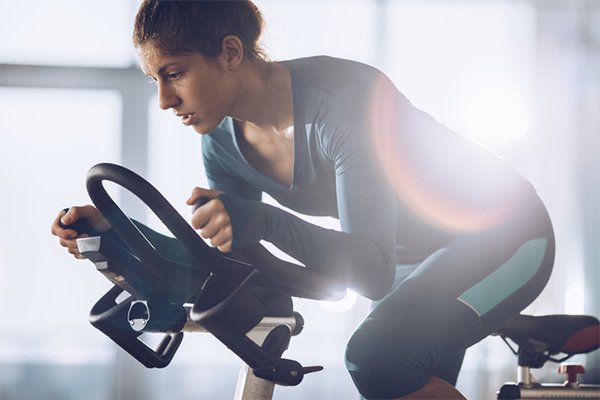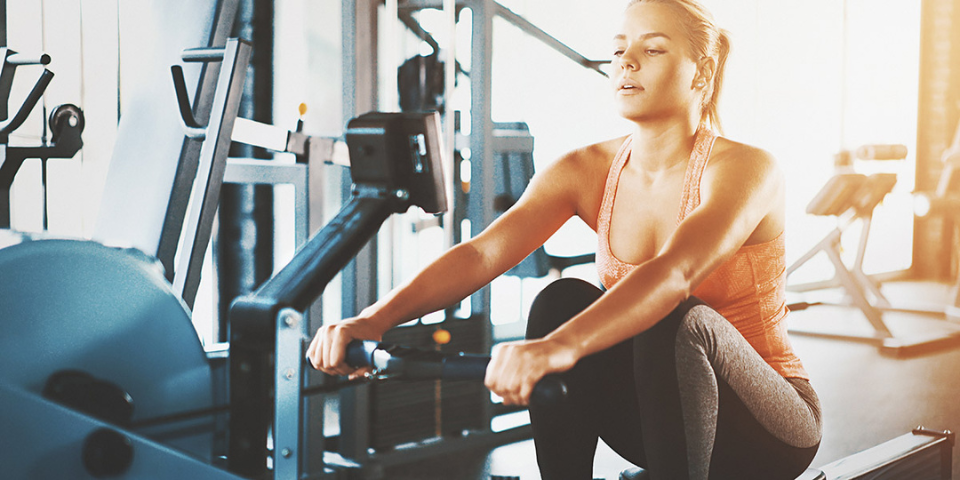If you’ve been consistently taking indoor cycling classes, you may start to wonder if you’re making progress or just spinning your wheels (pun intended). Thanks to that regular endorphin rush, you feel great, but are you getting better on the bike? And what does “better” actually mean?
We checked in with Justin Flexen, BODi instructor, to get his thoughts on the best ways to measure your cycling progress. Here’s what he had to say.
1. Track Your Heart Rate
“One of the best ways to determine progress is through heart rate,” Flexen says. “When you start to notice that you can work harder for longer or your resting heart rate lowers, then you know that you’re making progress.”
The BODi Bike by MYX makes it easy to track and train according to your heart rate, explains Flexen. “The calibration ride will determine your own customized heart-rate zones,” he says.
“We highly encourage you to complete the ride first thing in the morning before food or coffee and under the same physical conditions each time. Once your heart-rate zones are determined, you are then able to better track your progress by recalibrating every six weeks. Your customized heart-rate zones are specific to you and your cardiovascular fitness level, which means that you are able to track your progress every time you recalibrate.”
This feature not only offers a clear marker for cycling progress, but it can also let you know how many calories you’ve burned during a workout and prevent you from overtraining, which can lead to burnout or injuries.
2. Log Your Workouts
Keeping a fitness journal that records all of your rides, their duration, and how you felt during them can offer a snapshot of your growth. “A great way to measure progress is being able to do longer, more challenging rides or being able to use heavier weights than what you normally might be used to,” Flexen says.
Here are a few things you might notice:
- A moderately challenging class felt nearly impossible a month ago.
- You’re able to add more resistance to a climb than when you first started.
- Your new favorite class is 45 minutes long, even though you could only cycle for 20 minutes as a beginner.
All of these represent progress.
3. Look to the Scale (and Beyond)
If weight loss is your goal, indoor cycling is a great option. It’s not only convenient, low-impact, and beginner-friendly, but it also burns a surprising amount of calories. So, if you’re seeing the number on the scale go down, you’re doing something right.
However, if you’re not experiencing weight loss, that doesn’t mean you’re not making cycling progress. Weight loss is more complicated than “calories in versus calories out.” Other variables include diet, age, biological sex, hormones, and genetics.
Also, keep in mind that your body weight might even go up as you gain muscle mass in your glutes, quads, hamstrings, and calves. Tracking your body-fat percentage with a more advanced bathroom scale or taking body circumference measurements may provide more accurate data regarding the changes in your body composition.
4. Consider Cadence
Your cadence, or the rate at which you turn the pedals, can be another indicator of cycling progress. Cadence is measured in revolutions per minute (rpm). Most indoor fitness bikes, including the BODi Bike, include built-in cadence meters or computers that measure and track your cadence.
Being able to maintain the recommended cadence for a particular ride is a matter of fitness and coordination. As you become a more efficient rider, you’ll be better able to turn the pedals at the appropriate pace.
It’s important to note that improving your cadence isn’t simply a matter of pedaling faster. “It is not the goal to go as fast as you can but to go at a speed with enough resistance on your bike that it has an impact on your heart-rate zones,” Flexen says.
5. Monitor Mobility
One of the health benefits of regular cycling is better mobility, or the ability for joints to move through their full range of motion without pain or compensation. If you want to assess your improvement in regards to mobility, Flexen recommends paying closer attention to how you move in your everyday life.
“Movements that might have been uncomfortable or maybe even unattainable start to become accessible and easier,” he says. “For example, if you have always had tight calves and couldn’t squat comfortably, then, as you gain more calf flexibility and ankle mobility, you will notice that your squats improve. Mobility can have a huge impact on everyday movements.”




